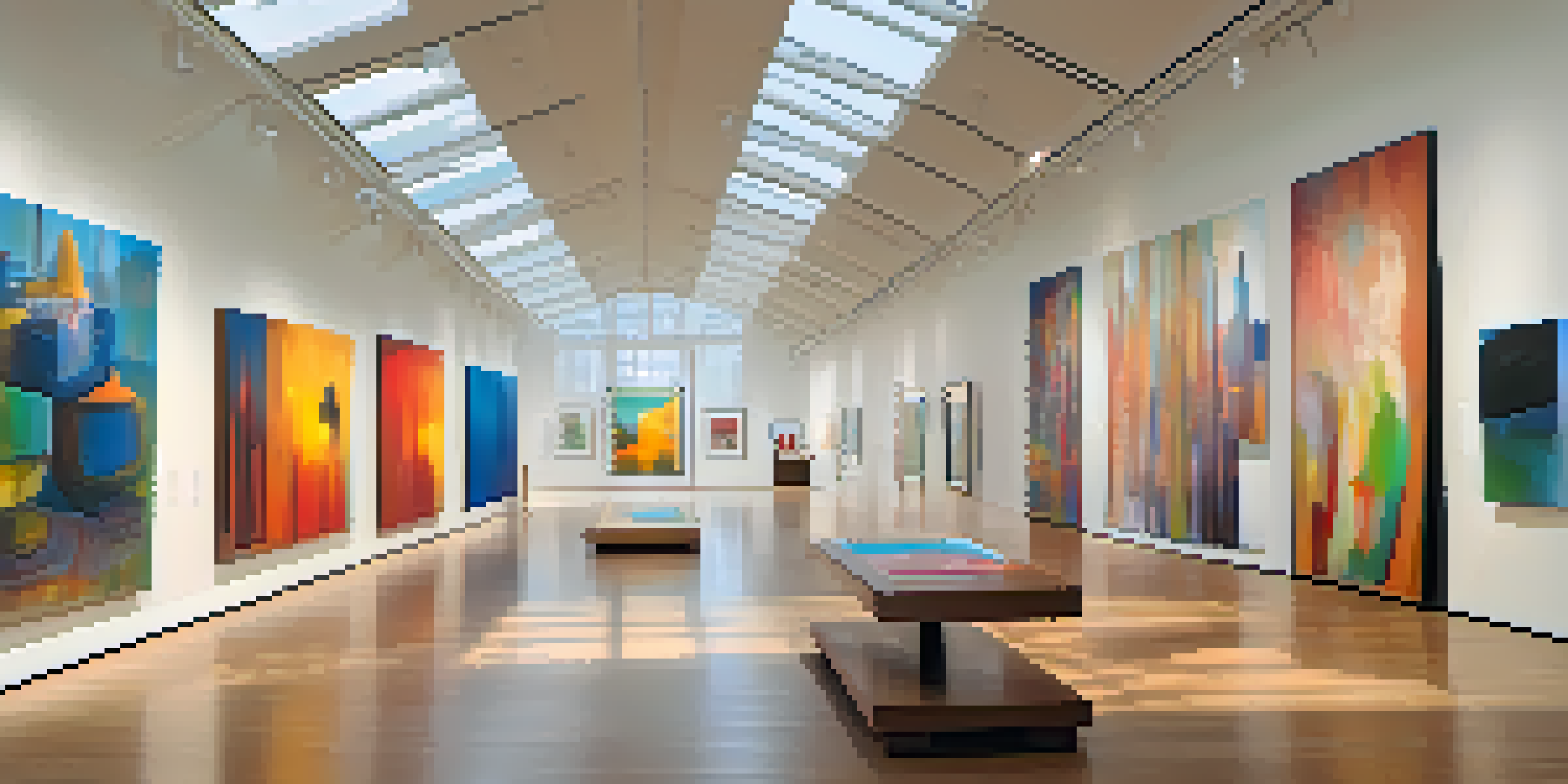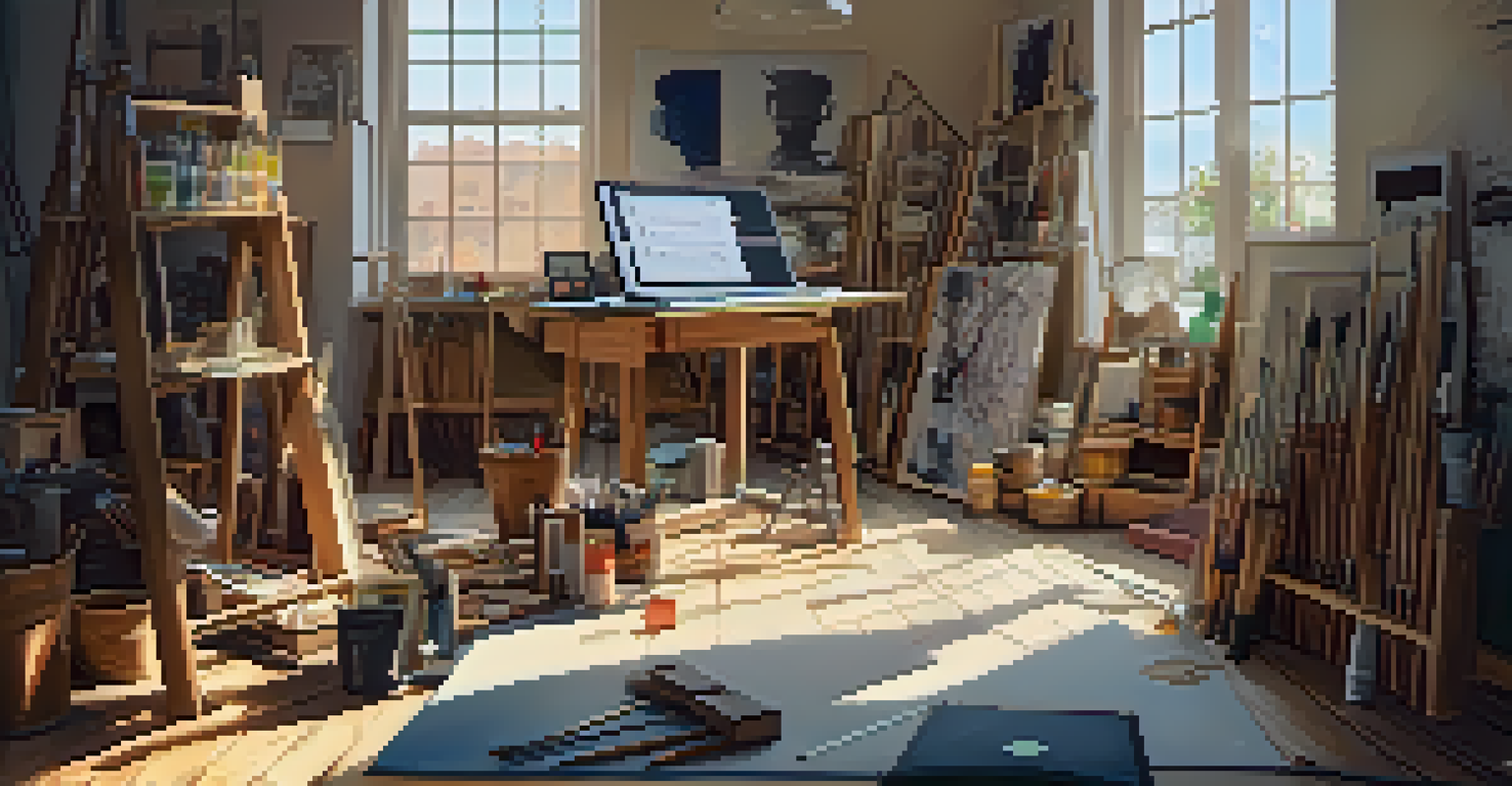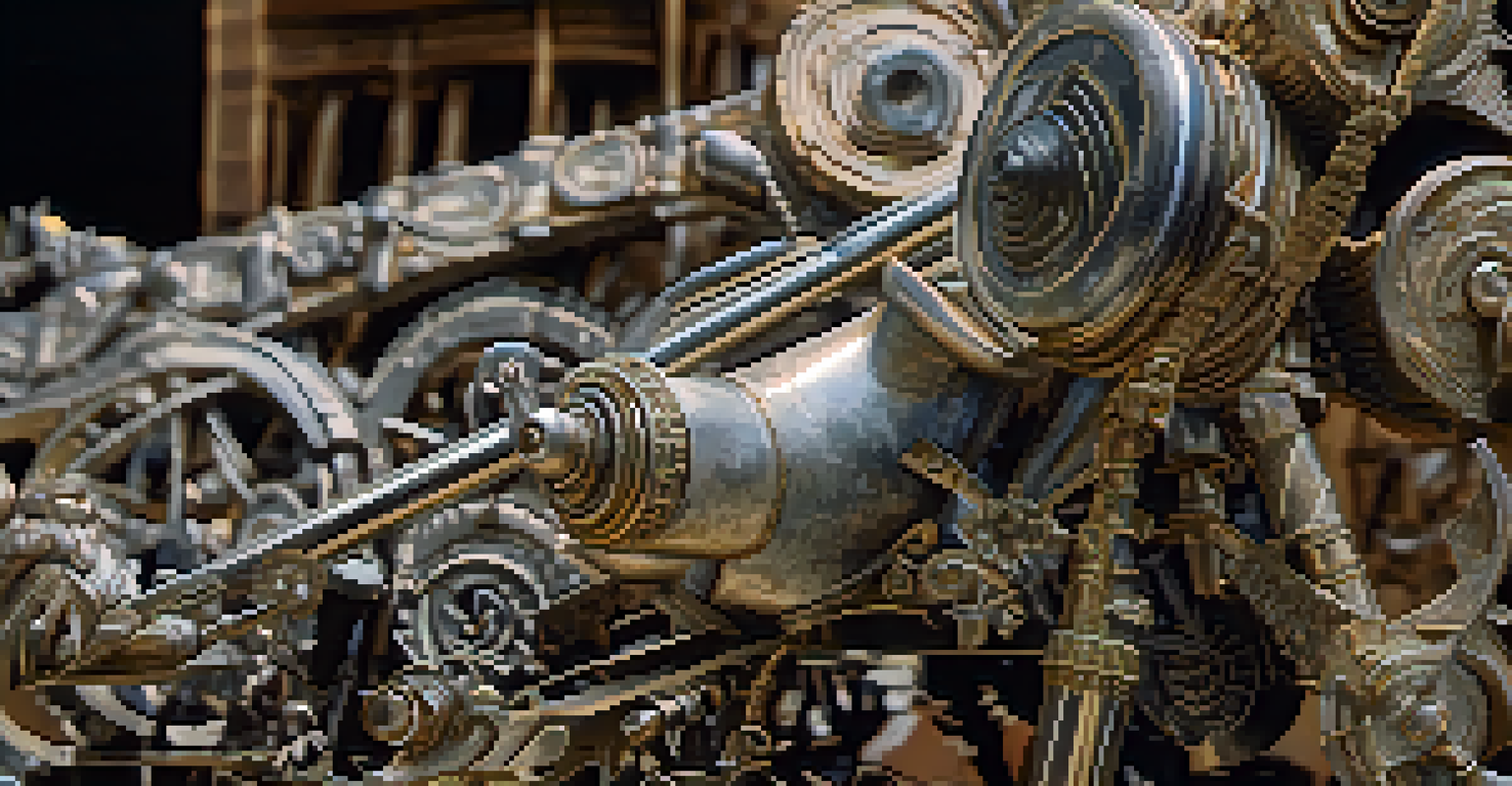Exploring the Concept of Authenticity in Contemporary Art

Defining Authenticity in the Art World
Authenticity in art refers to the genuineness of a piece, which can mean different things to different people. For some, it might be about the artist’s intent, while for others, it's about the material or technique used. This concept can often spark debates about what constitutes 'real' art, especially with the rise of digital mediums.
Art is not what you see, but what you make others see.
As we dive deeper, it’s essential to recognize that authenticity is not a one-size-fits-all notion. It can be tied to cultural context, historical significance, and even personal experiences. An artwork that resonates deeply with one viewer might feel entirely inauthentic to another, showcasing the subjective nature of art appreciation.
In contemporary art, the lines of authenticity have blurred even further, especially with the advent of technology. Artists today are exploring new platforms and materials, challenging traditional definitions and prompting us to question what we truly value in art.
The Role of the Artist’s Intent
At the heart of authenticity lies the artist’s intent. When an artist creates a piece, they often have a message or emotion they wish to convey. This intention can significantly influence how the artwork is perceived and categorized in terms of authenticity.

For instance, an artist using found objects in their work might aim to comment on consumerism or sustainability. Understanding their intent helps viewers appreciate the layers of meaning behind the piece, making the artwork feel more authentic. If the audience can connect with this intent, the artwork gains a deeper significance.
Authenticity is Subjective
The perception of authenticity in art varies greatly among individuals, influenced by personal experiences and cultural contexts.
However, the challenge arises when the audience interprets the work differently than intended. This divergence raises questions: Does an artwork lose its authenticity if it’s understood in a way the artist never anticipated? The answer often lies in the rich dialogue between the artist and the viewer.
Cultural Context and Authenticity
Cultural context plays a pivotal role in shaping our understanding of authenticity in art. An artwork created within a specific cultural background often carries meanings that might be lost on those outside that culture. This phenomenon highlights the importance of context in evaluating an artwork’s authenticity.
The best artist has no conception that a marble block does not contain within itself the figure that will emerge from it.
For example, indigenous artists may incorporate traditional symbols and techniques that are deeply rooted in their cultural identity. To fully appreciate these works, viewers must consider the cultural significance behind them. Ignoring this context can lead to misinterpretations and a lack of appreciation for the artwork's authenticity.
As globalization continues to influence the art world, the challenge remains: how do we respect and honor diverse cultural expressions while navigating the idea of authenticity? This ongoing dialogue is crucial in fostering a more inclusive understanding of what authentic art can be.
Technology’s Impact on Authenticity
In the digital age, technology has dramatically altered our perceptions of authenticity in contemporary art. With tools like digital painting and 3D printing, artists are now able to create works that challenge traditional forms and methods. This evolution begs the question: does the medium used impact the artwork's authenticity?
Furthermore, the rise of NFTs (non-fungible tokens) has introduced a new layer to the authenticity conversation. These unique digital assets allow artists to sell their work in a way that verifies its originality, offering a modern solution to the age-old question of authenticity. However, this also raises concerns about the commodification of art.
Artist's Intent Matters
Understanding an artist's intention behind their work is crucial for appreciating its authenticity and meaning.
As technology continues to evolve, so too will our definitions of authenticity. The challenge lies in adapting our perceptions to embrace these advancements while still holding onto the core values that define what makes art meaningful.
The Collector’s Perspective on Authenticity
For art collectors, authenticity is often a critical factor in determining the value of a piece. Collectors typically seek works that not only resonate with them emotionally but also hold significant value in the art market. This pursuit can lead to a complex relationship with authenticity, as the market can sometimes overshadow the artistic intent.
For instance, a collector might purchase a piece primarily for its investment potential rather than its emotional or cultural significance. This transactional approach can create a disconnect between the artwork and its intended message, raising questions about how authenticity is perceived in a market-driven environment.
Yet, many collectors also prioritize authenticity in their collections, seeking works that tell a story or reflect their personal values. This duality in perspective highlights the multifaceted nature of authenticity in the art world, as both emotional and financial considerations play a role.
Navigating the Art Market’s Authenticity Challenges
The art market is rife with challenges surrounding authenticity, from forgeries to misattributions. As the value of art continues to rise, so too does the temptation for deception. Art collectors and institutions must be vigilant in verifying the authenticity of pieces, which can often involve extensive research and provenance checks.
For example, renowned auction houses have stringent processes in place to authenticate works, yet even these can be susceptible to errors. This ongoing battle against forgeries underscores the importance of transparency and trust in the art market, as buyers seek assurance that their investments are genuine.
Digital Age Challenges Authenticity
Technology and digital mediums are reshaping our definitions of authenticity, prompting new conversations about what constitutes genuine art.
Ultimately, navigating these challenges requires a collaborative effort between artists, collectors, and institutions. By prioritizing authenticity and fostering open dialogue, the art community can work together to uphold the integrity of contemporary art.
The Future of Authenticity in Contemporary Art
As we look to the future, the concept of authenticity in contemporary art is likely to evolve alongside societal changes. The increasing influence of social media and digital platforms means that artists can now reach audiences beyond traditional galleries. This shift may redefine how we approach authenticity, blurring the lines even further.
Emerging artists are experimenting with new forms and expressions that challenge conventional notions of originality. As they navigate this landscape, they invite us to reconsider what authenticity means in an era where collaboration and remix culture are prevalent. This adaptability could lead to a richer, more inclusive understanding of authenticity in art.

In this ongoing exploration, one thing remains clear: authenticity will always be a vital part of the art conversation. As artists, collectors, and audiences continue to engage with one another, the quest for authenticity will shape the future of contemporary art in exciting and unexpected ways.